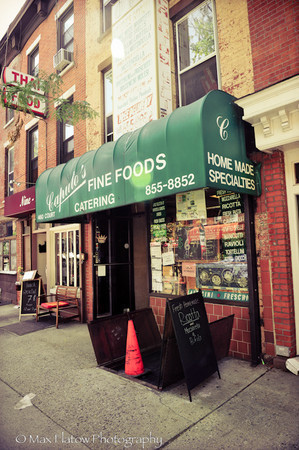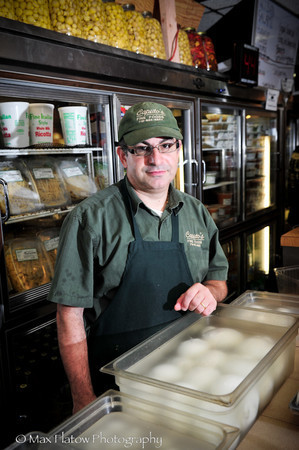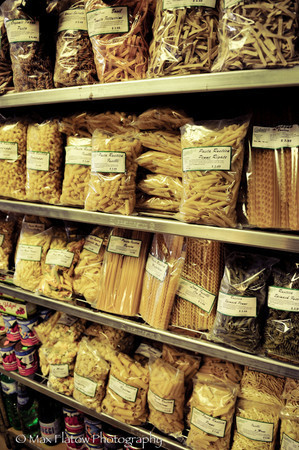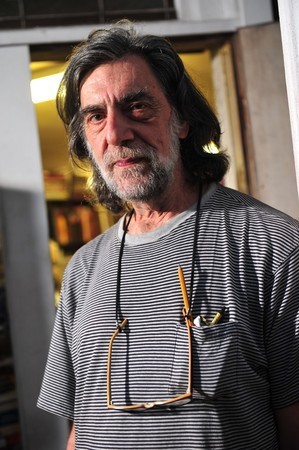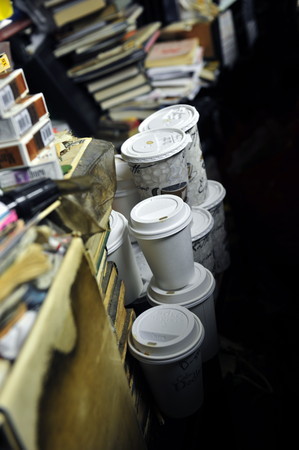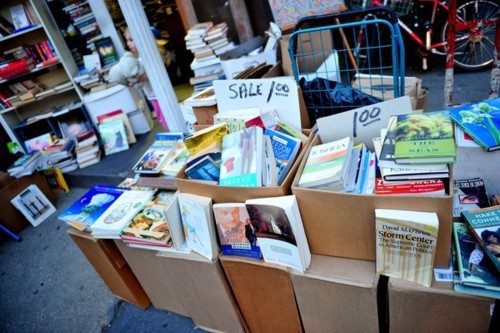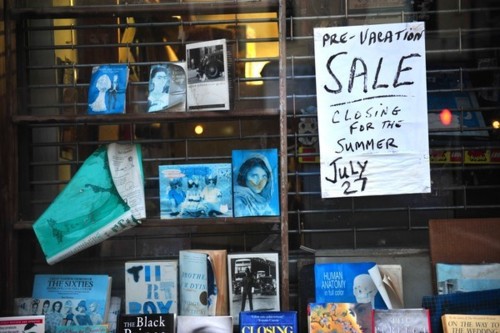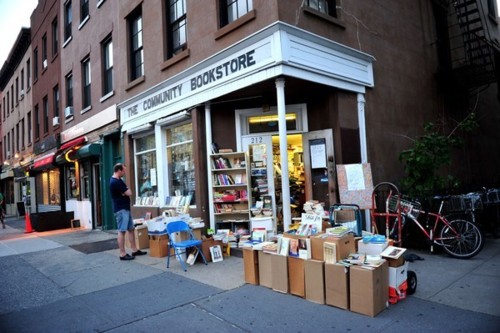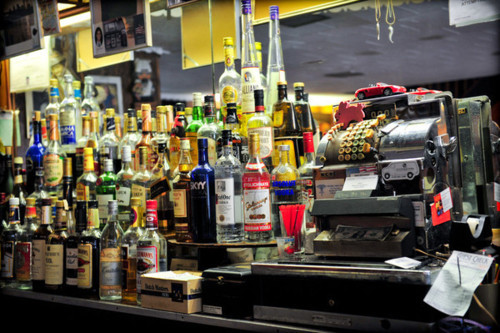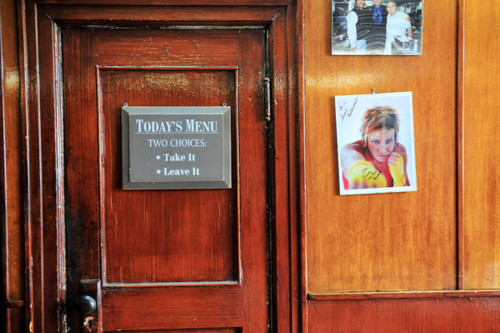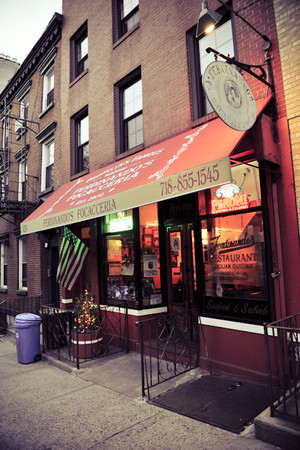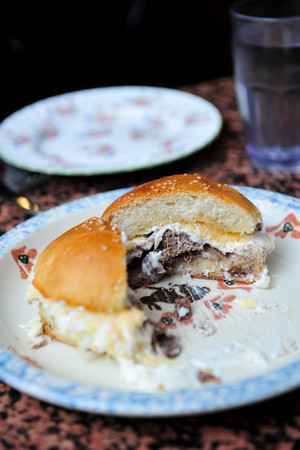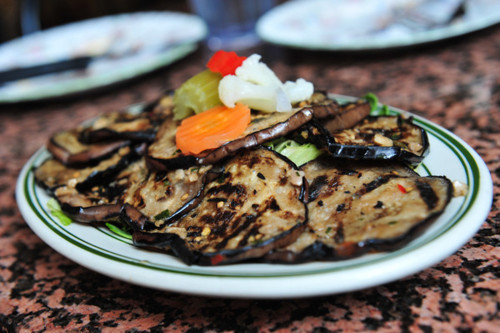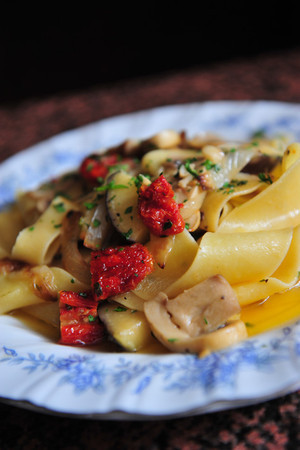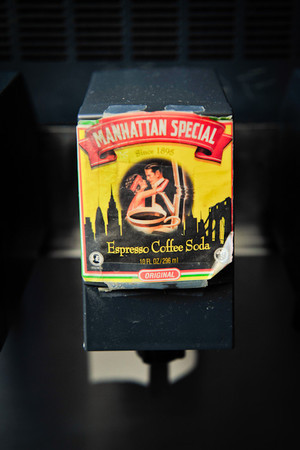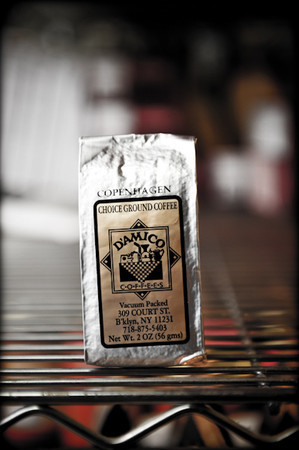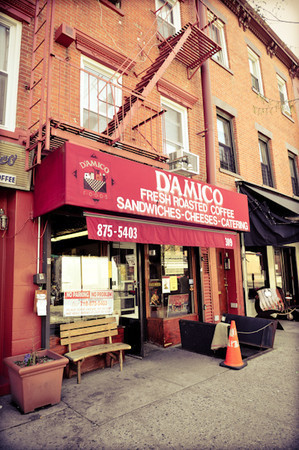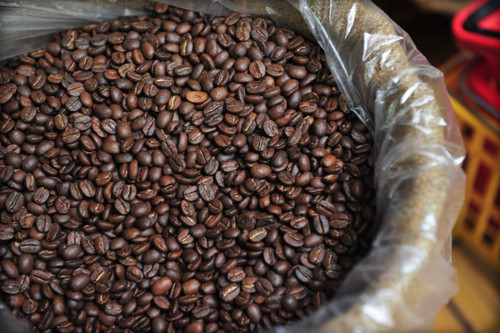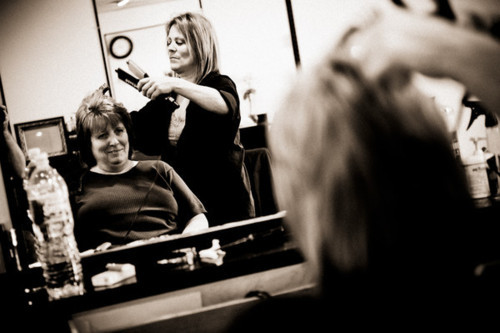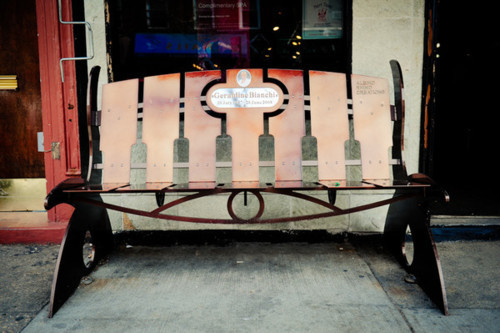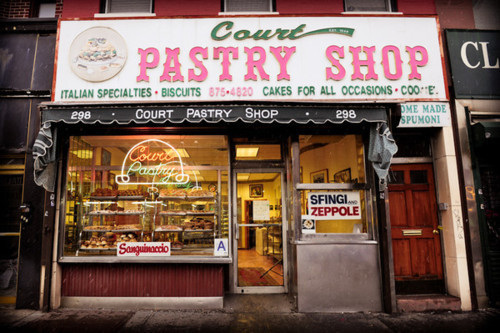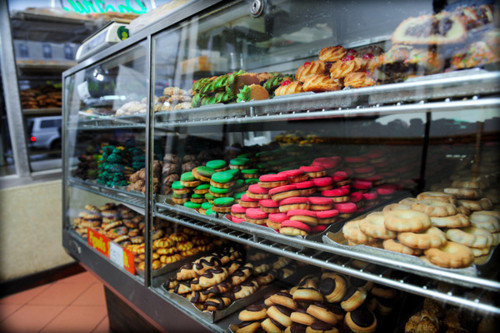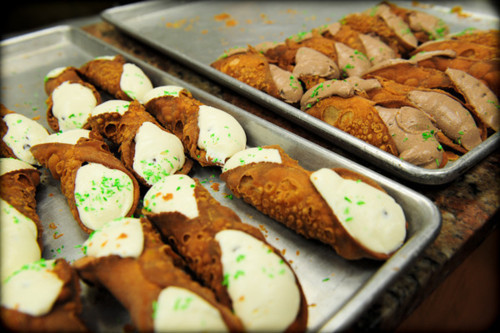Literary City Guide: Carroll Gardens
Originally written for EAT THIS POEM
LITERARY CITY GUIDE | CARROLL GARDENS, BROOKLYN, NY
“As you may have heard, all the writers are in Brooklyn these days. It’s the place to be. You’re simply not a writer if you don’t live here. Google “Brooklyn writer” and you’ll get, Did you mean: the future of literature as we know it?” – ‘I Write in Brooklyn. Get Over It.’”
— Colson Whitehead, Published in the New York Times on March 2nd, 2008.
Q&A
Relationship to Carroll Gardens: Raised in Carroll Gardens with a brief stint in Amherst, MA for college.
Writer you'd like to invite to dinner: Joseph Mitchell for some great, old New York stories.
Chef you'd like to prepare the meal: Deb Perelman of Smitten Kitchen fame.
Writing soundtrack: Folksy guitar songs, my “Higher Love” Pandora station, or peace and quiet.
Pen or Pencil: Pen
Coffee or Tea: Coffee to start, tea to stay starting.
Paperback or Hardback: Paperback
GOOD READS
BOOKSTORES
BookCourt. It’s not just an independent bookstore, it’s the literary pulse of Brooklyn. Located on busy Court Street, the Zook Family has been serving the likes of literati since 1981, and you’d be hard-pressed to not find what you’re looking for in their sun-literary shop. (Snag a seat in the back under the sunroof.) No one shows more support for local authors than BookCourt does, and that fervor has turned the store into one of the top event series in the country. Take the wall of titles devoted to staff selections seriously as everyone who works here is a real bookworm.
The Community Bookstore. People don’t walk into this dimly lit bookstore… they look both ways before slowly venturing in. Just a couple of blocks down from BookCourt, this independent shop looks like the type of place that might house the portal to another dimension. Owner John Scioli has been the keeper of this beautifully disorganized new and used mess of books since 1985. Once inside, be mindful, for any sudden movement might send a tower of books crashing. John won’t mind though; he’s used to it. Oh, and if you’re too nervous to enter, you’re not alone. Most people are happy just leafing through his boxes of $1 books right outside the store.
Freebird Books. If you venture away from the Court Street traffic and down towards the Brooklyn waterfront, you’ll come across this homely bookstore on pleasant Columbia Street. (Go in the late afternoon/evening to catch a pretty Brooklyn sunset while you’re at it.) Open only on weekends, this store is home to a sweet collection of books on New York culture and history. Community-minded and friendly, the owner also currently houses Books Through Bars, a nonprofit providing help to prisoners looking to gain access to the printed word. (Side note: Freebird is a great place to mill around in while you wait for your table to open up down the block at Pok Pok NY.)
LIBRARIES
The Carroll Gardens Branch of the Brooklyn Public Library. This traditional Carnegie library has been a strong community resource for the neighborhood since 1905. Located on the corner of a tree-lined brownstone block, it’s still a wonderful place to read, write, and study as the sun pours in through big, old windows. Popular with young families, the library also hosts a number of weekly kids events and art programs.
READINGS & CONFERENCES
The Brooklyn Book Festival. Held at Brooklyn Borough Hall and Plaza every autumn, this renowned book fair is the largest indoor/outdoor free literary event in New York City. Last year’s event drew an estimated 45,000 people to Brooklyn! There’s no better event to rub shoulders with national and international bestselling authors, support your favorite emerging writers, and attend everything from themed readings and panel discussions to author signings and poetry performances. This year, the festival will be held on September 14, 2014, but there will be literary-themed events taking place at bookstores, parks, theaters, and libraries all week.
The Brooklyn Writers Space Reading Series. A membership organization that provides quiet office space for over 700 writers, their free public readings are held every month at BookCourt, just down the block from their Court Street location. The series features both published and unpublished authors.
BAM: Brooklyn Academy of Music. While BAM is best known for its theater, dance, and film series, they also host a prize medley of readings, lectures, and storytelling events.
Sackett Street Reading Series. The Sackett Street Writers' Workshop was born out of eight writers meeting in the kitchen of one woman's Brooklyn brownstone. It is now a creative home for over 2,000 writers. A number of their free reading events are held at BookCourt.
OTHER FINDS
Brooklyn Literary Walking Tour. You can hold the historic neighborhood of Brooklyn Heights responsible for placing Brooklyn on the literary map. On the second Sunday of each month, the Greenwich Village Literary Pub Crawl crosses the bridge to offer a walking tour that shows off where some of the most famous writers lived. Find out where W.H. Auden was inspired or where Truman Capote put his pen, and where the likes of Hart Crane, Norman Mailer, Arthur Miller, Henry Miller, Thomas Wolfe, and Richard Wright all lived. It’s a reservation worth making.
Jalopy Theater and School of Music. Just kissing the Brooklyn-Battery Tunnel lives a hidden, rustic gem of a red velvet-curtained music venue that, ironically, leaves you feeling very far from Brooklyn. Wearing their love for folk and roots music on their sleeves, owners Geoff and Lynette Wiley have a good thing going on this Carroll Gardens stretch of “road less traveled by.” Go early for some comfort food and brew at their Jalopy Tavern next door or to Phil’s Crummy Corner for some cheap beer and homemade empanadas before plopping down in an old church pew for a toe-tapping, banjo-picking good time.
“Two floors above the butcher
First door on the right
And life filled to the brim
As I stood by my window
And looked out on those
Brooklyn Roads.”
— Neil Diamond, “Brooklyn Roads”
GOOD EATS
COFFEE SHOPS
Court Street Grocers. This homegrown grocery shop not only sources great specialty food products in a neatly packed space, they happen to rule seriously over the classic breakfast sandwich. I don’t know how they get scrambled eggs, melted white cheddar, and arugula on ciabatta to taste so good, but they do. (Add bacon, you can thank me later.)
Caputo’s Bake Shop. Skip brunch and do how the locals do. Make Caputo’syour first early morning stop for a cup of coffee ($.95) and a buttered onion roll fresh out of the oven ($.50). Established in 1904 by the Caputo Family, their long, striped yellow and blue bread bags may be the #1 most recognizable logo in Carroll Gardens, and you can be sure that whatever neighborhood restaurant you’re dining at will have sourced their bread from them. I’ll leave you with two words: Lard Bread.
D’Amico Foods. An old Carroll Gardens hangout, this homey 66-year old shop still roasts around 300 to 500 pounds of coffee every day. Like Caputo’s, the coffee served at most neighborhood restaurants will have come from D’Amico’s and you wouldn’t even know it. Aside from a serious selection of coffee, they also make a mean Italian hero piled high with deli meat of your choosing (tip: the roast beef is roasted in-house and sells out fast). These days most people ask for their coffees to go; the D’Amicos are slightly nostalgic for the days when customers would stick around. If you go, take your coffee to a table in the back and get to know Joanny, Francis, and Frank D’Amico. They’ll have some good Brooklyn stories for you.
Smith Canteen. With its carrara marble café tables and romantic marriage of mirrors, tin, and tile, this corner café is a lovely “Rue de Martyrs”-inspired Parisian respite in a former working-class Italian neighborhood. Offering locally sourced and a seasonally changing array of pastries, sandwiches, soups and salads, Smith Canteen and the Carroll Street Green Market (across the street) hold hands together in pleasant partnership. Grab a tiny table by the window or take a stand at the coffee counter, but don’t leave without pairing your Counter Culture coffee with a homemade fruity pop tart.
A PROPER MEAL
Lucali. What’s a trip to Carroll Gardens without a quick stop for pizza and calzones? The line for this warm and cozy restaurant may be long, but it’ll be worth the wait once you’re seated and closing your eyes in delight between bites. Served piping hot from the brick oven will come a thin-crust pie in an incredible wash of a grandmother’s secret sauce, painted with toppings of your choosing, a mix of mozzarella cheeses and a final grating of Grana Padano. It’s pizza to write home about. The dimly-lit space is split between just a dozen wood tables and an open marble kitchen counter, so any chair will be a good chair for you to sit and gaze at handsome owner and pizzaiolo, Mark Iacono, as he rolls dough with his customers’ empty BYOB wine bottles.
Ferdinando’s Focacceria. You’ll soon want to add this old-school Sicilian restaurant to your old-world charm bracelet. In the 1950’s, Ferdinando’s was thelunchtime spot for nearby dockworkers with lines out the door for its transcendent panelle sandwich. Fluffy fried chickpea fritters dug into a warm house-baked semolina roll with a heap of ricotta and grated cheese. Go and see how many aged folks walk through the door having made the long drive back to the old neighborhood for their favorite childhood food memory. And when they’re done, you know they wash it down with a Manhattan Special, an espresso soda that has been made in Brooklyn since 1895, except Ferdinando’s is the only place left that has it on draft. Go before you can’t go anymore.
La Slowteria. Down the south end of Court Street is where you’ll find this super authentic, super relaxed Mexican food spot that goes well beyond tacos and burritos. Hailing from and operating a restaurant in the vacation-friendly beach town of Tulum, chef and owner Hugo Orozco brought his slow-cooked food to Carroll Gardens after meeting and falling in love with a woman who was visiting from New York (now his wife and co-owner). Their corn tortillas are hand-pressed to order; their cocktails and juices are hand-squeezed and one-of-a-kind. Hard to put their menu into words, this is where you go for the traditional recipes fondly remembered, unforgettably deconstructed, thoughtfully re-imagined, and beautifully presented. Guacamole will never taste the same again.
Buttermilk Channel. Named after the mile-long tidal strait separating Governor’s Island from Brooklyn, this sweet ‘n salty brunch and dinner spot has been speaking the local language for a few years now. When your menu boasts egg scrambles mixed with hot sausage from the local butcher (Esposito’s) and handmade mozzarella from the local cheese purveyor (Caputo’s Fine Foods), you might as well start counting the number of neighborhood hearts you’ve won over. From the gratis honey and sea salt popovers to the maple and bacon-roasted almond snacks to the oh-so-popular buttermilk fried chicken and cheddar waffles, the portions here carry weight and will have you leaning back in Brooklyn-infused food bliss.
TREATS
Court Pastry Shop. Don’t you dare leave Carroll Gardens without a white box of cookies wrapped in string. Brothers Vincent and Gasper Zerilli have been wiping their flour-dusted hands on aprons since they were kids. Between their crispy cannolis, cream-filled lobster tails, flaky orangey ricotta-filled sfogliatelles, and old-fashioned Italian cookies, this charming Italian bakery has been putting smiles on faces since 1948, wooing people in off the street with their sweet smells and, oh yes, the best homemade lemon ices around. Forget the wedding cake! My husband and I served platters upon platters of Court Pastry cookies when we got married. Go for the rainbows.
Brooklyn Farmacy & Soda Fountain. What was a pharmacy for nearly 100 years is now an adorable, old-timey dessert stop with a paper-hat wait-staff serving old-fashioned egg creams, ice cream sodas, shakes and sundaes from behind a counter lined with old apothecary wood cabinets and drawers. Oozing with charm, it’s hard to know which is sweeter – the hot and cold treats or the vintage Brooklyn, penny candy décor.
Margaret Palca Bakes. This utilitarian, unadorned bakeshop is where Margaret, herself, gets the baking done. Steal a peek behind the counter and you’ll see a little, bandana-wearing Margaret in her kitchen folding batter and transferring hot trays of cookies, brownies, pies, and cakes from the oven. Her store is the perfect place to pick up a coffee and a bag of her famous, buttery rugelach before strolling down the Columbia Street waterfront in either direction -- towards Red Hook, or to Brooklyn Bridge Park. Order a simple sandwich made on her homemade focaccia or a container of one of her prepared salads. Either way, no matter what you get, it will have been made with love. By Margaret.
SYLVIE'S 5 FAVORITES
1. Favorite view: The Culver Viaduct. For just a couple short stops between Park Slope and Carroll Gardens, the F and G trains run above ground. Whether approaching or departing the Smith-Ninth Station in Carroll Gardens (the highest subway station in the world!), I always make a point of putting my phone or book down to take in the industrial landscape of the Gowanus Canal, the Brooklyn skyline, and everyone’s favorite relic of an olden Brooklyn, the heavily instagrammed Kentile Floors sign.
2. Favorite place to write: For hours (hours!) in the window of Ted & Honey. I’ve known this particular “red” corner since I was a kid when it was just thatreally good deli next door to Cobble Hill Park. Now, it’s just that really good café… next door to Cobble Hill Park. When I can’t snag a stool in the window, I make a beeline for one of three seats at the tea and coffee counter. They have a good-looking breakfast/lunch menu that’s locally sourced, and they always manage to have the perfect play-list going at a volume that doesn’t distract. It may be “coffeehouse cool” mixed with a push of the stroller scene, but I don’t mind it one bit. If you find yourself at Ted & Honey in the warmer months, ask for your sandwich to go and then grab a bench next door in Cobble Hill Park.
3. Favorite museum: Of course I'm partial to the Brooklyn Museum of Art. Their temporary exhibits beget animated brunch conversation and their permanent collections of Egyptian, Classical, and Ancient Middle Eastern sculptures, wall reliefs, and dummies can’t be beat. Not to mention every first Saturday of the month (known as “Target First Saturdays”), the museum stays open from 5-11 pm, offering free admission and the chance to move from room to room where you’ll find everything from live music and dancing to films and trunk shows to pop-up curator talks and hands-on interactive workshops. With the restaurant open and the bar serving drinks all evening, it can honestly feel like one huge house party. Target First Saturday was one of the first dates I went on with my husband.
4. Favorite coffee shop: Kings Coffee is co-owned by two Brooklyn brothers, Dominic and John, who brew espresso and sell beans out of their 300 square foot open garage on one of the quietest streets in Carroll Gardens. In warm weather, I love walking up to the bar, with standing room for two, and ordering the Breukelen Dutch – a cold brew coffee made with the country’s first CoffeeGa Ridge, a 3.2L cold drip hand made from bamboo and glass. Drinking coffee at Kings makes me feel really cool and like I’m drinking coffee without anyone in the world knowing.
5. Favorite thing about Carroll Gardens: Even with the scary number of people moving here, it still feels like the same small town I grew up in next to a big city.



